#pollinator: woodpecker
Text
Sunday Birding
I wasn’t able to do as much birding today because I broke my toe, so I wanted to take it a bit easy on my walk. I was still able to go around the pond at work, but I just went to the bird watch station at the arboretum instead of doing my usual wander around the place. I might go again tomorrow since I have the day off (I gave myself a four day weekend with the holiday :D). Anyway, on to the birds!
Pretty sure this is a brown thrasher, fluffing themselves up in a tree:
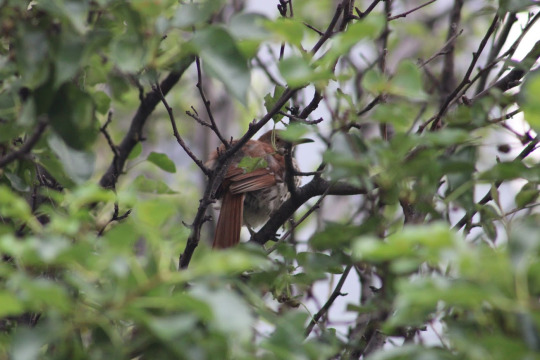
There were a bunch of these guys running around. They look like female red-winged black birds, but I also think some of them are juveniles too:


My buddy!! The grackle!! I love watching them hop around:

Some wildflowers around the pond:

The baby Canadian geese...they grow up so fast...

They were on guard duty:

Looking at a sus human...

Is that good for your neck bud?
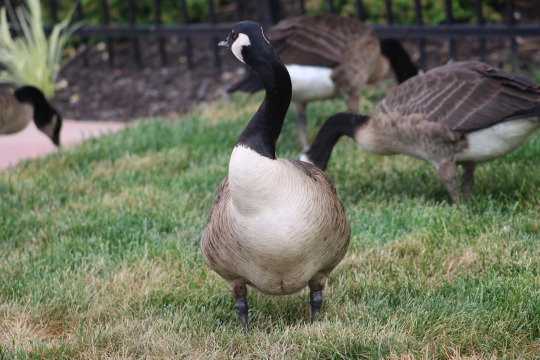
BEEEEEEEEEEE:

I don’t know what this guy is but they’re SO FUCKING COOL:
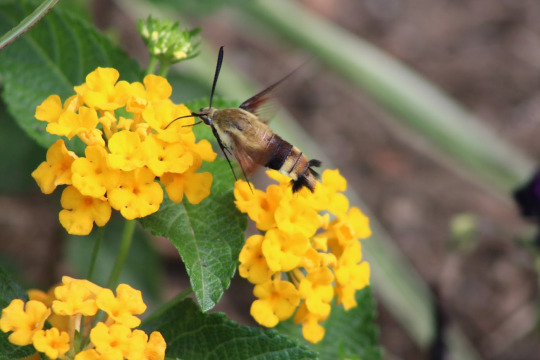
This goldfinch is dealing with some technical difficulties:
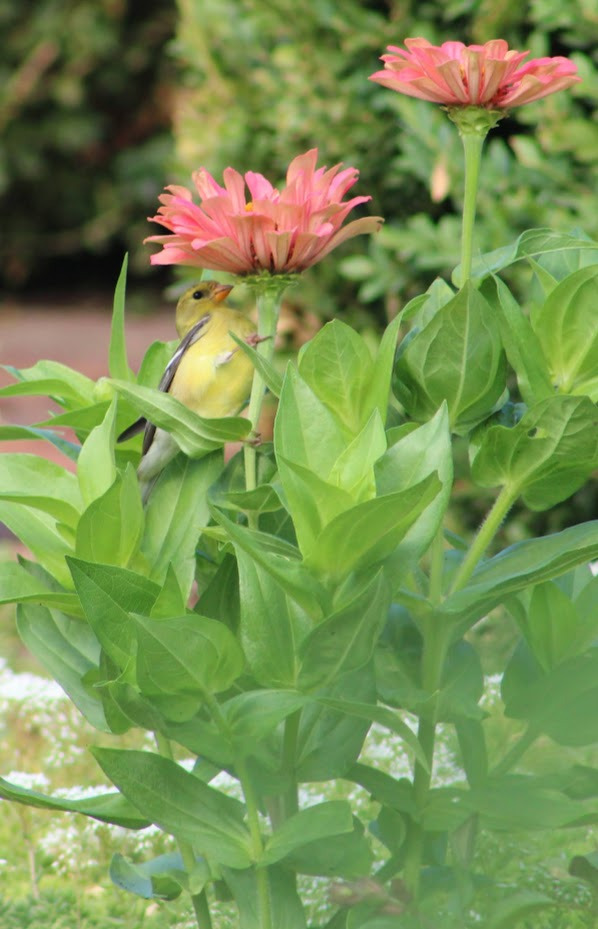
I love this female cardinal’s tuft! So cute!

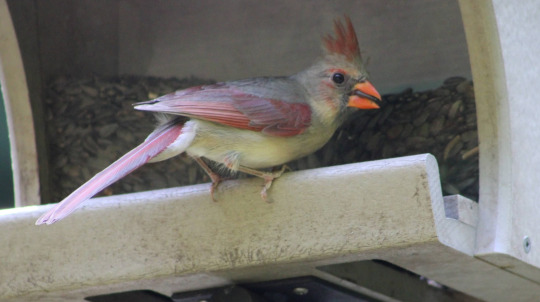
Male cardinal detected:

This female house finch is trying to blend in with her surroundings:

A female red-bellied woodpecker grabbing a snack:

A white-breasted nuthatch:

NOOOO, THEY DROPPED THEIR TREAT!!
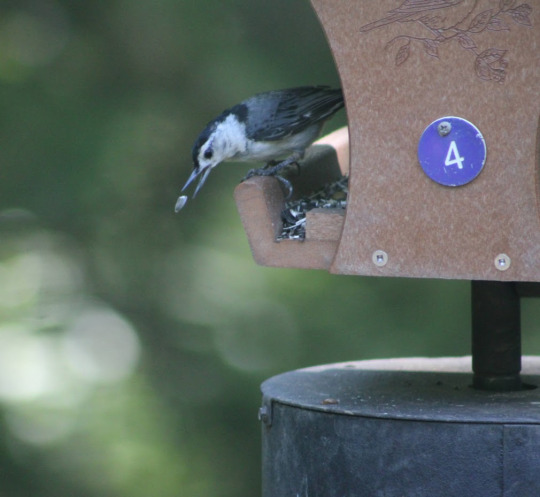
A male downy woodpecker:

A tufted titmouse:
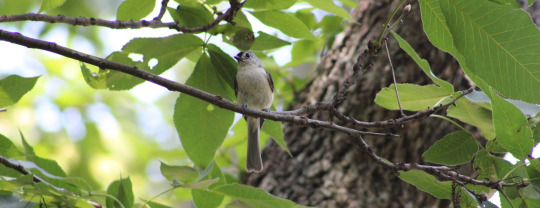
Some pretty flowers:



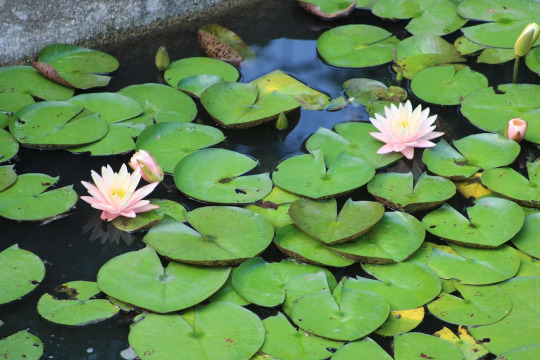



#brown thrasher#red-winged blackbird#grackle#canadian geese#northern cardinal#house finch#downy woodpecker#red-bellied woodpecker#tufted titmouse#white-breasted nuthatch#american goldfinch#flowers#bees#and other random pollinators#birding#birds#bird watching#birdlr
3 notes
·
View notes
Text
some times i see people talking about the Earth and climate change saying things like "now i know it is difficult to deal with utter hopelessness, terror, and visiting the thoughts of death"
and it's like wow I am so deeply sorry about the suffering. but...concern. Concern. Tell me, am I missing something important? Why do I feel a sense of hope for our planet? Am I a lonely fool? Have I been consumed by naïveté and misguided optimism?
That would be weird. It feels weird. It feels like I would be well suited to despair. My natural temperament is Mortal Terror making my body crushed for a thousand years at the bottom of the deepest trenches of the ocean. I've thought before "I can't live any more. This exceeds the tensile strength of the human spirit."
And then? After irreversible catastrophic failure of the soul, there is...what?
We try to imagine the future where we fight to save our home and it is very painful. The resistance feels so small and the machine of death feels so vast. But something's missing.
Everyone else is missing—the plants, trees, bugs, beasts, and creatures. Hello? Are the other humans seeing this? Nature wants you to know that she is not a princess in a tower. Look! Look at the chaos moving through every cell! Iterating! Adapting! Becoming! Thriving! Watch the pollinators tirelessly at work, observe the mycorrhizal network in the forest floor distributing the rich fruits of decay and photosynthesis for every inhabitant! Pay attention! We belong here too. They feed and shelter us, give us the very air we breathe, and in return we plant and propagate, cull, thin, and burn, shape, trample, till, shepherd and sprout seeds. Our species can look toward the future, to the world of our descendants. We can call every plant and animal by name and teach our children to use and care for them responsibly. We can feel this anger, pain, and grief on behalf of the family of Life, OUR family, and we can love the smallest beetle and the humblest moss.
Look at it! This thing is nothing like me, it does not benefit me, it has no use or purpose for me, but LOOK at it! Look at its intricate structure! Look at the marvelousness of its behaviors and biological functions! Look at its uniqueness throughout the whole universe! Look at it, and see its infinite value!
I saved a baby tree from the scorching hot gravel of a parking lot. I watched it grow and thrive in the hands of its caretaker. Many more followed, trees and herbs and flowers, rescued and carefully placed in cups and old tubs that once held yogurt and sour cream. This is so strange, I thought. They're everywhere, offering themselves for free, and no one thinks to take them. Everyone thinks transplanting a tree is hard and that nothing grows on the edge of the pavement but weeds. But it's so easy??? This is weird. Plant Nurseries Hate Her: Get Free Plants With This One Weird Trick.
I protected an old barren garden patch where nothing had thrived from being mowed and weed-whacked, and transplanted little plants that I found. I marveled at the bees that came. Chicory bloomed, then asters and goldenrod. I shed actual tears over a spicebush swallowtail. I ordered some milkweed from the internet, and the monarchs came for them. Less then twenty-five bucks for a divine experience like this. Wow, everyone else really needs to know!
I started volunteering at a nature center, and was allowed to transplant flowers where they sprouted in inopportune locations. I collected tons of seeds all fall and winter long.
There is much, much more, all of it bigger than I ever would have imagined. But this spring there were more birds, in number and in species, than I'd ever seen in my back yard before. Chickadees, swallows, finches, nuthatches, jays, cardinals, warblers, sparrows, woodpeckers of every kind...I remembered just a couple years prior when all I ever saw out there was a couple grackles or starlings or robins, with the occasional sparrow. Those birds come in flocks rather than couples now. And then the bumblebee arrived. An American bumblebee, endangered now, a queen. For a few days she was always out there, would fly out and buzz around me when I came out to tend to my now-innumerable plants. It's nesting time for them. She chose this place I was creating. She saw that this place would take care of her.
A week ago, I discovered wild strawberries growing in my Mamaw's driveway. I found lyreleaf sage growing beside a gravel road. I've become a master of transplanting; I took several of each home. Yesterday, I saw a tiny, metallic blue bee, an Osmia mason bee. Today, I saw an oriole and a strange, very fancy fly. I see something new almost every day. Every day I am being irreversibly changed as a person. How did I ever fail to see how much this matters?
I said I feel hope...do I feel it? I don't think it's a feeling, I think it's a practice. It's being part of our communities and our ecosystems. Nature's interconnectedness is both reality and example: to survive, we take care of one another. And when one member of the community helps another thrive, it creates a cascade that increases the thriving of all. Just by existing, you help us all survive.
You can only take care of so many plants before you have to give some away. You can only hold so much knowledge before you have to give it away. I gave seeds to a dozen different flowers to my next-door neighbor and she invited me inside and wouldn't let me leave without food, and we talked about plants and trees. A family friend lets me have goats' milk and heirloom vegetables in exchange for help around the farm, and I listen to him talk about trees, bugs, and soil and learn so much I feel like I'm about to explode from knowledge.
Being a caretaker is unavoidably a community-oriented, community-forming thing. You can't grow plants all by yourself. Your garden will make too many tomatoes. Share them. Your milkweed will make hundreds and hundreds of seeds. Spread them. Wild blackberries invite you to take and eat. Your lonely retired neighbor invites you to talk and keep her company. Once you grow delicious fruits or little oak trees, you always have a reason to greet someone and say, "Look, it is a gift!"
We're not alone. We are not separate. We take care of each other. Every species, every individual. A single action of caretaking creates a cascade effect of thriving. A single unapologetic love for a creature creates a blossom of curiosity and fascination in everyone surrounding. It's so powerful.
As my chemical romance says "I am not afraid to keep on living"
#nature#community#plants#gardening#you are not separate from every other thing#the wonders#caretaking#plantarchy
2K notes
·
View notes
Text


Extinction is always accompanied by unanswerable questions. Absence makes mysteries of the simplest details: the Passenger Pigeon's weight; the Dodo's tail; the diet of the Thylacine.
We know more about some species' cause of death than we do about the life that preceded it. When its last refuge was clearcut in the 1940's, the biggest question about the Ivory-Billed Woodpecker’s disappearance was whether it was, in fact, gone. But another mystery nagged from the depths of the swamp.
Like the Ivory-Bill, the stronghold of the Carolina Parakeet had been old-growth wetland forest—rich with cypress nuts too hard for other birds to crack, and plentiful places to roost and rear young. Though extirpated elsewhere by hunting & the pet trade, the bird should likewise have been expected to persist in the wildness of the Southern swamps. Yet the common parakeets vanished 40 years sooner than did the woodpecker.
A cavity-nester, the Carolina Parakeet made its home not among tree branches, but inside their dead, hollow trunks. The Ivory-Bill was able to drill itself a new nest each year, but a beak made for cracking cypress shells was useless at excavating solid wood, and parakeets were dependent upon whatever hand-me-down hollows they were able to find.
There are other species that live in secondhand nests. And the fingerprints of human influence can be found far beyond the reach of a physical hand.
The honeybee was brought to North America in 1622, and the European imports quickly set off on their own New World conquest, heralds of the incoming tide. In less than 200 years, they were established throughout the lands east of the Mississippi River. Most often, feral swarms would build their buzzing homes inside of hollow trees.
There's no way to know for sure how large a part the European Honeybee played in the loss of the Carolina Parakeet. But we do know that swarming honeybees have been documented stealing nests from the vulnerable ‘Ua'u bird of Hawaii, leaving limp bodies welted with stings beneath their feathers.
We know, too, the impact that our current honeybee-centric system of agriculture has upon the 4000+ species of bee native to North America, 1 in 4 of which is threatened with extinction. Wild bees require diverse diets and habitat to thrive; they struggle to survive amid our sprawling, bug-sprayed monoculture, much less meet the demands of its pollination.
Without the honeybee, it’s often said, our industrialized foodchain would collapse. But, maybe it isn't too late to find ways to prevent everything else from crumbling at our expense.
The title of this painting is 'The Colonizers'. It is gouache on 18x24" paper, and is #6 in my series about the Carolina Parakeet.
1K notes
·
View notes
Text
If you are someone who hates bugs and kills them on sight (except for those that can actually cause considerable harm) please..just..take a second...think before you act. Does that bug need to die? Are you killing it just to feel better?
Yes, phobias are real. I have arachnophobia. And it's taken a long time for me to get to the point I'm at now where i can hold jumping spiders and be sort of near wolf spiders. I still struggle but to be in a field where you're outside a lot, you have to get comfortable with spiders sometimes crawling on you.
The first step is respect. You don't have to like or enjoy bugs. But you need to respect what their role is in the environment. To make it easier, think of animals you DO like and learn about their relationship with bugs. You really like birds? Well guess what a ton of birds eat. Even birds that don't directly eat bugs may eat things that do (ya know the whole food web thing). Bugs also may positively impact their environment through nutrient cycling, eating other, more destructive bugs, eating harmful molds, bacteria, or fungi, pollination, etc.
I used to be skeeved out by a lot of bugs, particularly bug larvae. Guess what I'm studying right now? Invertebrates are so interesting once you get past the initial discomfort.
Many of us believe invertebrates = gross/scary. This needs to stop. Invertebrates are going extinct so fast and because everyone hates them we don't have enough research to even know how many we are losing. Pesticides/herbicides have completely wiped out a significant portion of the invertebrate population, and that's along with other things like pollution, ocean acidification, invasive species, etc.
We are losing spiders. We are losing centipedes. We are losing tiny flies. We are losing worms and beetles and bees and wasps. We are losing butterflies and fireflies. Some invertebrate species only exist in one small pond or cave. Some have never actually been seen and some have only been seen once. And its affecting all of us. Fish are disappearing from streams because there's nothing to eat. Amphibians are disappearing because there's nothing to eat (and bc of chytrid fungus). Bats are disappearing because there's nothing to eat (and bc of white nose syndrome). Pangolins, axolotls, red pandas, armadillos, woodpeckers, monkeys, salamanders, these all have diets that are either partially or only fulfilled by bugs.
I go outside in the summer, and don't even have to use bug spray anymore. I remember getting chased by swarms of nats and mosquitos. Nights glittering with hundreds of fireflies. Now I only worry about mosquitos in the spring by the water. Even then I have maybe 5 bites at most, when before I used to be covered in bites from being outside. Before I was born, windshields used to be COVERED in bugs when you went down the highway.
Please, you don't have to like them, but please make an effort to change your initial reaction. They are earthlings just like us. They don't deserve to die because they aren't cute. We need more funding and research. They are getting wiped out and people think that's a fucking good thing. Stop using bug zappers. Try using bug repellent that doesn't have DEET in it (only use it if absolutely necessary), take the bug out in a cup and piece of paper, use methods other than pesticides to get pests out of your garden. Yes sometimes you need to kill a tick or get the termites or ants out of your house. Sometimes a venomous spider gets in your house and it's not safe to handle them. Sometimes they are killing your plants and you need to get rid of them. But a harmless millipede who's one defense is to literally curl into a little spiral and is completely harmless? Does it really have to die?
#bugs#bugblr#insects#invertebrates#spiders#worms#im at work currently so i dont have time for sources
713 notes
·
View notes
Note
How effective are those bee houses? The ones made of bamboo or planks with holes drilled in them. Do they really help bees/other bugs or are they just a waste of money?
solitary bees and wasps live in them, but they may also attract predators/parasites of those pollinators, and some become death traps/woodpecker buffets! if you don’t want the upkeep or don’t want to build a good one, it might be more sustainable (and benefit more bugs) to just leave some old unaltered dead wood and dried plant stems in the ground, for everyone to use as they wish.
some useful info about bee houses:
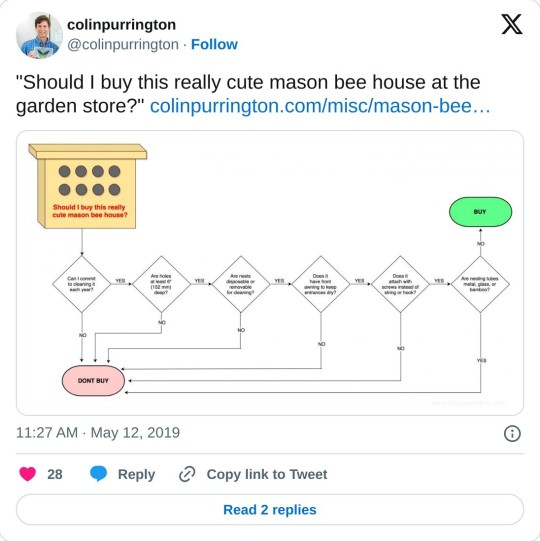
504 notes
·
View notes
Text
General guide to birds in Israel pt 2- cooler birds
This will be a long post. Link to part 1
White spectated bulbul/bul-bul me-mush-kaf
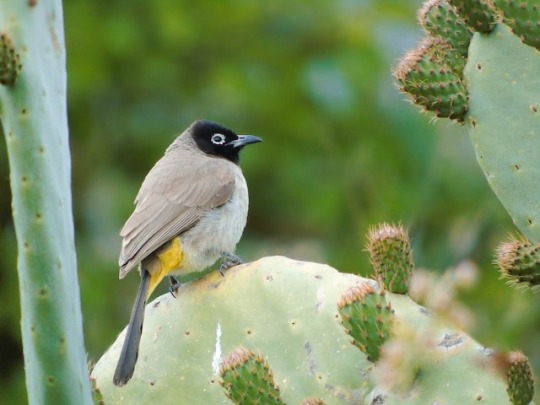
Usually referred to as just bulbul, this bisexual king is the roundest and my most favourite bird. IMPORTANT! BULBUL MEANS DICK! DO NOT TALK ABOUT YOUR LOVE FOR BULBULIM IN PUBLIC!
These birds are slightly larger then the house sparrow and are easily distinguished by their yellow butt. Their calls are reminiscent of frogs. They mate for life and are all bisexual and they cuddle each other. They are a menace to farmers because they are fond of fruit and tend to nibble just a little at a time. You can find them in all parts of Israel as long as there are nice trees nearby.
Eurasian blackbird/shakh-rur

These timid birds like to hide in bushes and trees. Their calls are beautiful and I love them. They are smaller then a pigeon. The males are black and the females are brown. They feed on seeds, fruits and bugs, and use their beaks to search the ground for worms. You can find them in Jerusalem and the north, they like cool weather and don’t fuck with sand.
Great tit/yar-ge-zi ma-tzui
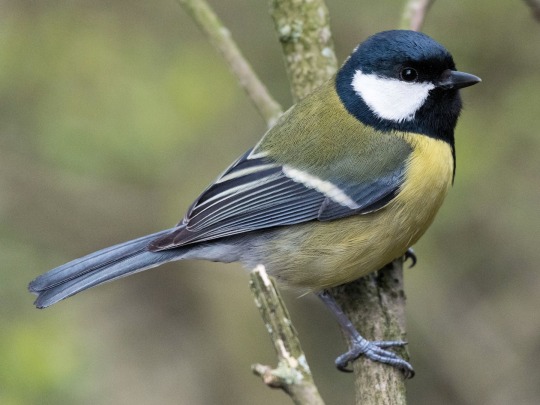
Life isn’t easy for these tiny psychopaths, which might be the reason they developed such a temper. Their Hebrew name translates to “angry one”, and for a reason. They are very aggressive towards other birds. They also feed on the brains of bats. You can distinguish between males and females by the thickness of the black stripe on their belly- males have a thicker one than females. They are most common to the north of Jerusalem, but you can find them in some parts of the desert.
Palestine sunbird/tzu-fit bo-he-ket
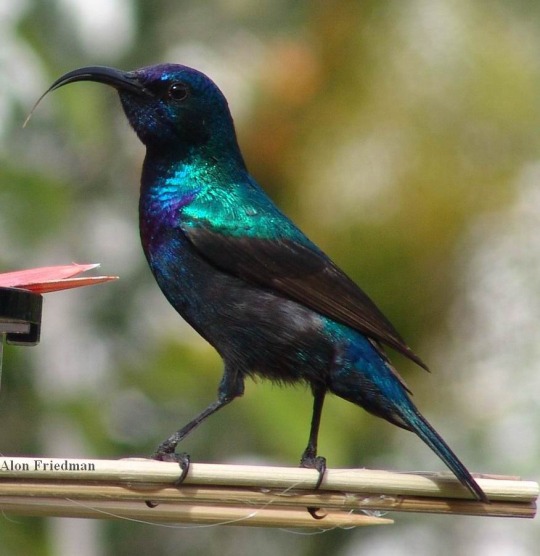
No, that’s not a hummingbird, it’s the sunbird! Despite their remarkable likeness they aren’t even a little related. Sunbirds feed on nectar and are pollinators! The males have black feathers that shine in the sunlight (which is how they got their name) and the females are a muddy grey, but they’re just as lovely. You can find them in all parts of Israel, especially near lush flowery areas!
White wagtail/nakh-li-e-li la-van
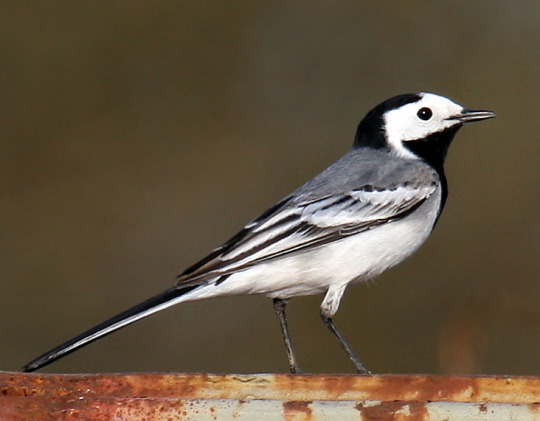
First migrant bird everyone!!! (Some blackbirds migrate here but some nest during summer so shhhh) This lovely round bird starts it’s visits around October and leaves when it gets hellishly warm again. Due to global warming the wagtails visits are shortening, so appreciate them while you can. Like their name suggests, the wagtails wag their tails. A lot. You can find them near water sources during the cold-ish months of the year!
Eurasian jay- or-va-ni shkhor ki-pa
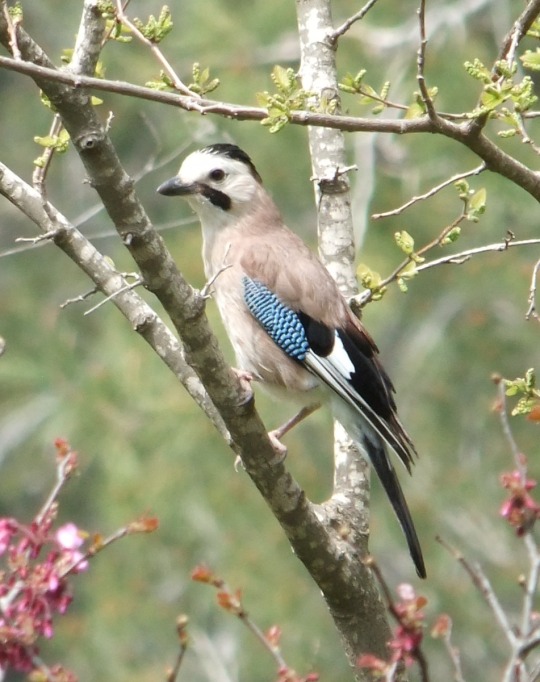
Eurasian jays can be found in other parts of the world, but I’m pretty sure the one we have in Israel is a different sub-species because the ones in Europe lack the beautiful black top that they’re named after.
The jay is a type of corvid, and in addition to being extremely social and intelligent, these birds can mimic other animals. Due to urbanisation, the jays learned to mimic car alarms, the ringing of phones and the cries of human babies. Jays are extremely fond of acorns, and burry them in the ground in preparation for harsher months. A single jay can remember between 4000 to 5000 hiding spots!
Syrian woodpecker/ na-kar su-ri

This picture is of a male woodpecker. The females have a completely black head. Woodpeckers can locate bugs that have burrowed inside trees and use their beak and long tongues to eat them, thereby helping the trees get rid of pests! Woodpeckers also love acorns, and compete with jays over them. To prevent concussions, the woodpecker’s tongue wraps around their brain, keeping it in place while they peck. You can find them in non-desert areas of Israel!
Lesser whitethroat/siv-khi to-kha-nim
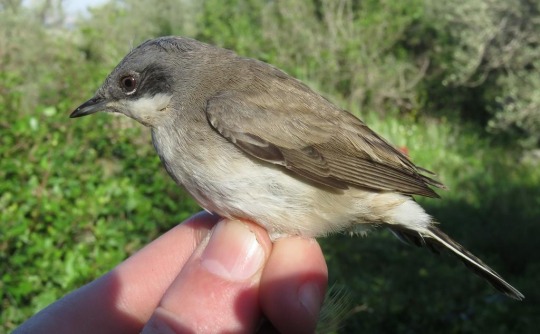
Another migrant birds! These floofballs come here twice a year, once in spring and once in autum, although some whitethroats nest in the north all year long. During their migration you can find them everywhere in Israel, even in very urban areas! They get their Hebrew name, which roughly translates to miller’s shrubbery-liker, because their white chests look how a miller’s apron would look after a long hard day!
Super winged lapwing/sik-sak
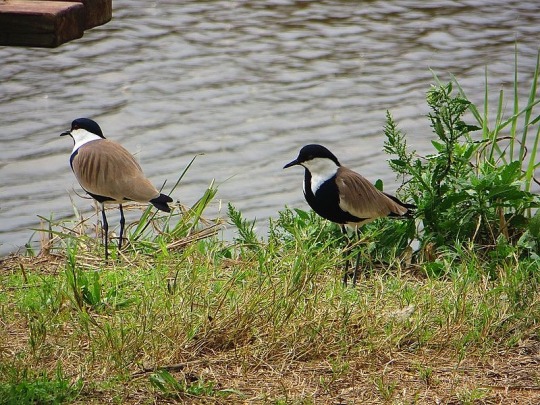
The siksaks are water birds with ridiculously long legs that they use to stab their prey. They kind of look like they are wearing a tux! Their original Hebrew name was “sharoni mezuyan”, which translates to “one that lives in the Sharon and is armed with a weapon” but also “fucking sharoni”. You can find them anywhere in Israel as long as there is a near enough water source.
White breasted kingfisher/shal-dag la-van kha-ze

One of my favorite birds. The kingfisher is a magnificent bird of prey with brilliant blue feathers that always make my day. They are most common in the north and west of Israel, but they nest in smaller numbers in the south. They kingfisher’s diet consists of not only fish, but of crabs, frogs, slugs, bugs, and even the occasional rodent. Their varied diet helps them thrive even in drier areas.
73 notes
·
View notes
Photo


Lesser Long-nose Bat (Leptonycteris yerbabuena)
With tongues as long as their bodies, these pollinators are able to sip on the nectar of cacti and agave flowers.
These desert nectar-feeding bats are true heroes in maintaining fragile desert ecosystems in the southwestern United States and Mexico. They are the primary night pollinators of both the organ pipe and saguaro cactus. In turn, growing up to 50 feet in height, the cacti provide important nesting and perching sites for a variety of birds, such as red-tailed hawks, elf owls, Gila woodpeckers, and gilded flickers.
The National Park Service promotes bat conservation through research, educational projects, and working with multiple private, non-profit, and federal and state agency partners.
Next time you see beautiful saguaro blooms or fruit this summer, make sure to thank a bat!
NPS Photos
via: Saguaro National Park (Arizona)
115 notes
·
View notes
Text
Life Series as Birds
I had the oddest sudden fixation to do some “light” bird research and determine that if each member of the Life Series was depicted as an avian, what bird would they depict. (may become a thread of changes)

So Grian is almost unanimously depicted as a Parrot, more specifically a Scarlet Macaw due to Season 7 “Pesky Bird”. As well as the birds sassy additude.
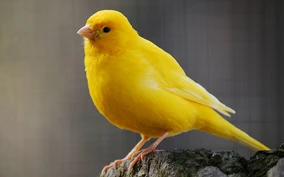
Same as Grian, possibly even more, Jimmy is commonly depicted as a Canary due to the Canary in a Coal Mine.
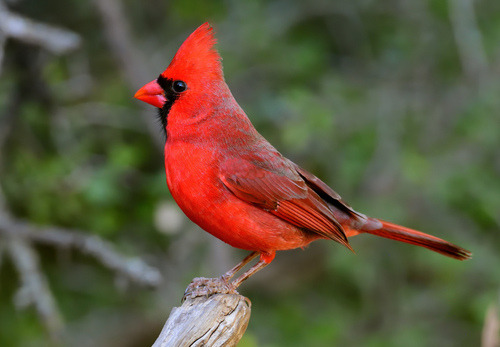
For Mumbo, I felt like the Northern Cardinal would be a nice fit due to its vibrant red and black coloring. Cardinals are also symbols of loyalty and devotion, rather fitting for someone who tends to be loyal to his allies. Cardinals are also often associated with passed loved ones visiting relatives in the form of Cardinals, which would fit seeing as Mumbo is usually one of the first out of the series.
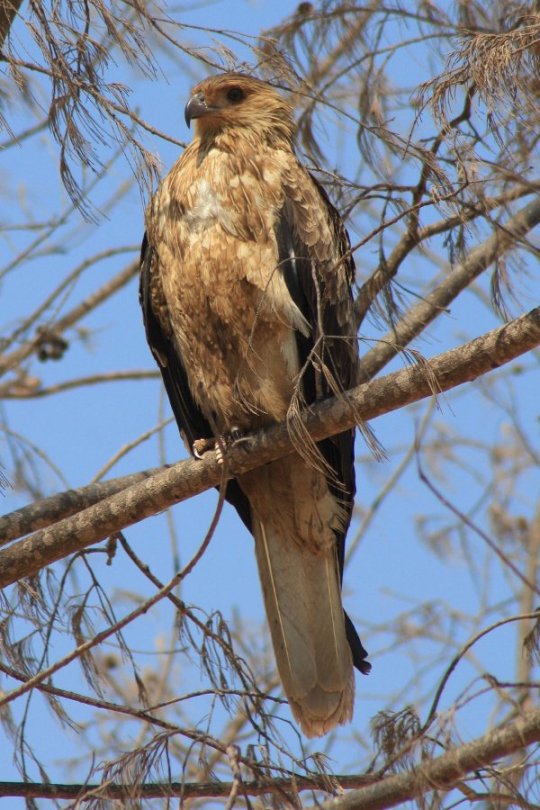
Tango was actually the last one I chose, due to this, and an attempt to give each member a different bird, it was difficult. After some further research, I decided on the Whistling Kite for the reason that it's nicknamed one of Australia's "Firebirds" for their use of fire to catch prey.
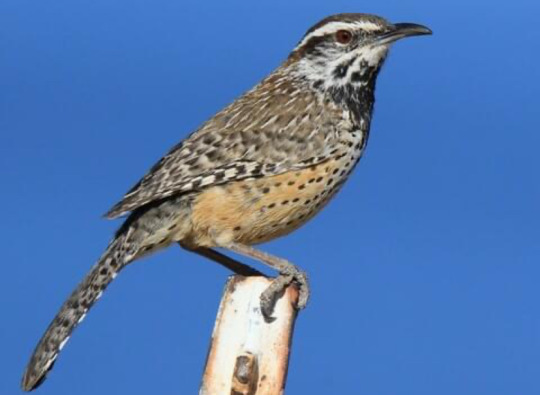
Believe it or not, Impulse was actually the member who inspired it. Out of curiosity, I looked up Arizona's national bird and the Cactus Wren popped up and I could envision Impulse as a Cactus Wren with the browns and golden yellow with a nice touch of white.
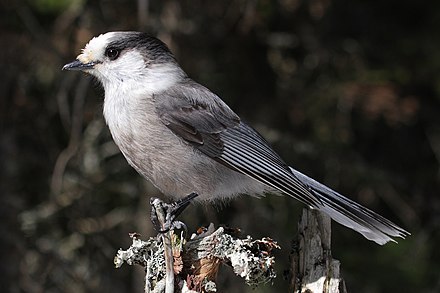
As evident above, my first idea was looking up national birds. Despite being a small bird, The shade of grey that Canada’s national bird, the Grey Jay, has is similar to Etho’s minecraft skin hair color. Grey Jay's are also seen as a good omen, similarly to how people seem to gravitate towards Etho almost like hes a good omen or a good luck charm.
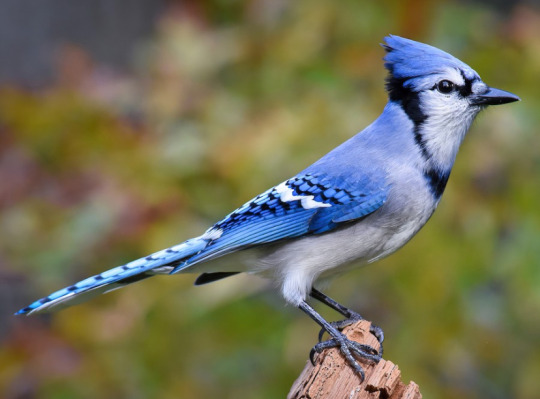
No matter all the birds I looked into, my brain kept saying Skizz for a Blue Jay. Blue Jays are associated with joy, happiness, along with some mischief, however, I would like to confess that I have yet to watch Skizz's pov of any of the seasons so i'm not as familiar with his personality as i am the others so if this choice seems uncharacteristic I apologize, but just imagine fanon Skizz with dashing sky blue wings.

Originally I was going to put Lizzie as a hummingbird because they are pollinators, small, and adorable. However, hummingbirds are green and im a sucker from “Small” Smallishbeans Joel. Not to mention how hummingbirds can sometimes be hostile with one another alot like how Joel tends to targets everyone regardless of who it is.
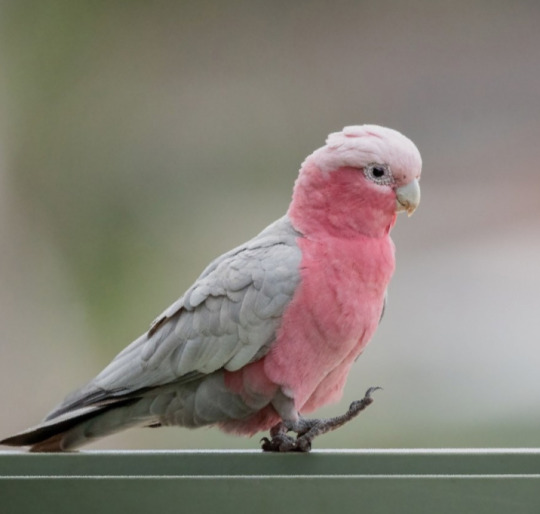
For Lizzie I decided a parakeet was a good choice for Lizzie because they're small, cute, and colorful. Parakeets are also very social and affectionate birds with lots of personality alot like how Lizzie is.
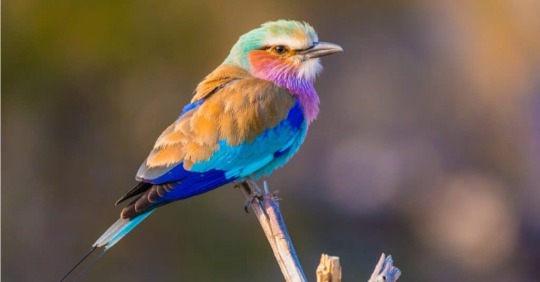
Parakeet was originally what I chose for Scott, but then I learned about Kenya’s national bird, the gorgeous Lilac-Breasted Roller which is perfect for Scott as it reminds me of his Empires Chromia outfit and all the beautiful things he creates. I mean LOOK AT IT!

For BigB, I decided to bestow him with my states bird, the Eastern Bluebird. Bluebirds represent joy, happiness, and luck. The Blue and orangish brown coat reminds me of Big B’s color palette of a blue sweater with a brown cookie on it.

Cleo has high Great Horned Owl vibes and you can’t convince me otherwise. Symbols of protection and not tolerating deception. GH Owls are also super intimidating in their size and appearance, fitting for the cutthroat Cleo.
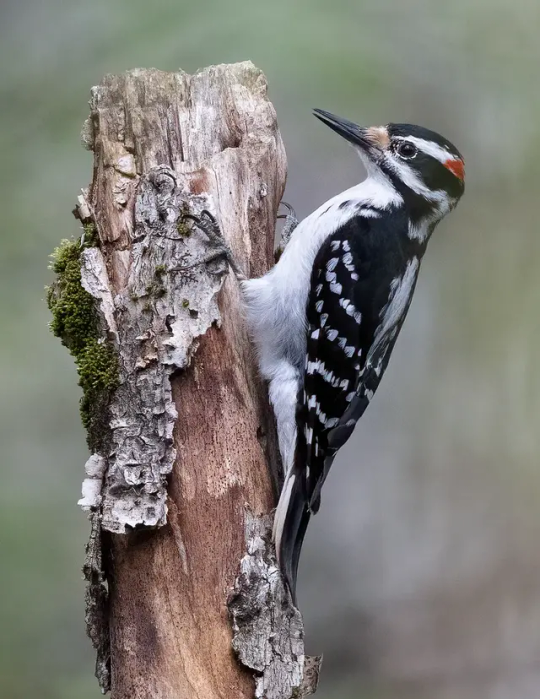
During all of this, I almost gave up on the opportunity for Martyn as a Woodpecker. No need for further explanation, but I'll give you the symbolism: Optimism, new opportunities, and creativity which matches Martyn.
(Edit: IVE JUST BEEN INFORMED THAT THE WOODPECKER IS ALSO ASSOCIATED WITH MARS SO YAH)

Ironically enough, I decided Gem would make a good Barn Owl, their white coat and owls being a figure of wisdom reminded me of Gem's Empires Season 1 as well as her enjoyment of birch. Barn Owls are also good hunters to it fits her like a glove
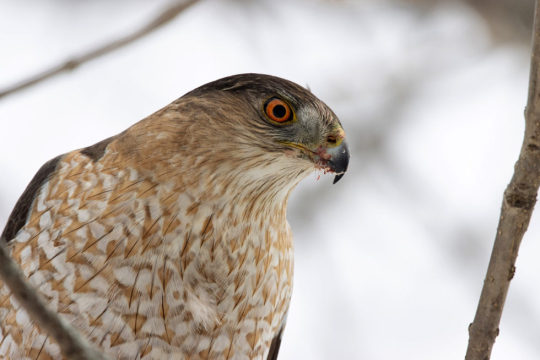
I wouldn't give up the opportunity to choose a hawk for Mr. GoodTimesWithScar.The Hawk I chose is the Cooper's Hawk. But really I chose a random Washington state hawk that I thought suited Scar.
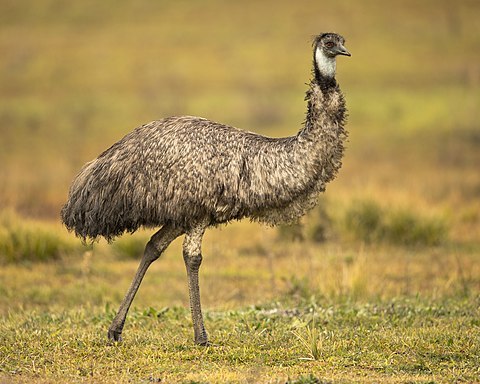
For our favorite crazy Aussie, only Australia's national bird will do. I believe the Emu suits Pearl well because one, its national bird, and two, Emus are one of the dorkiest kinds of birds and have a lot of personality (and thievery skills).
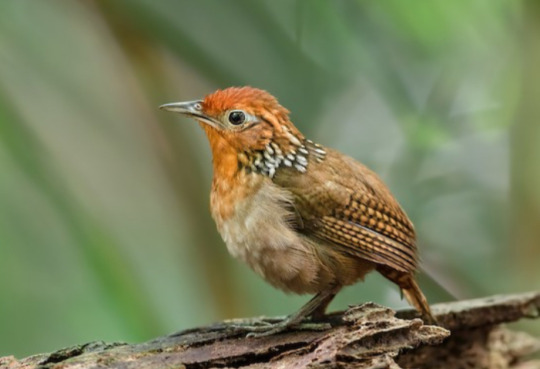
For Ren, I almost went with the Peacock, but couldn't invision Ren as a Peacock, so instead of going the Royalty Route, I went the pun route. Ren…….as a Wren. A Musician Wren, Fitting for the Theater Nerd of the Life Series, no take backs.
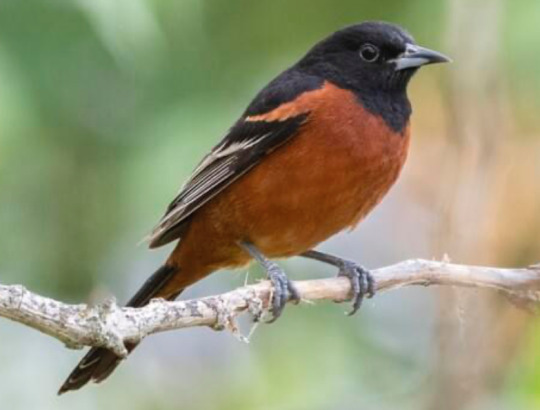
For Bdubs, I went with the Orchard Oriole, A small bird that builds with, you guessed it, MOSS!
I might add on or talk about members as other birds and yah
13 notes
·
View notes
Text
fairies generally imitate the lifestyles of birds in their environment so in the case of desert fairies, the majority of them live in holes in cacti that are created by woodpeckers. some will also dwell in modified burrowing owl burrows or ground nests but cacti hollows are generally considered the safest and most convenient for smaller families. saguaro flowers typically bloom around april-june so thats tulips favorite time of year cause she gets to see a lot of bats and birds fly on top of her house when they pollinate the flowers
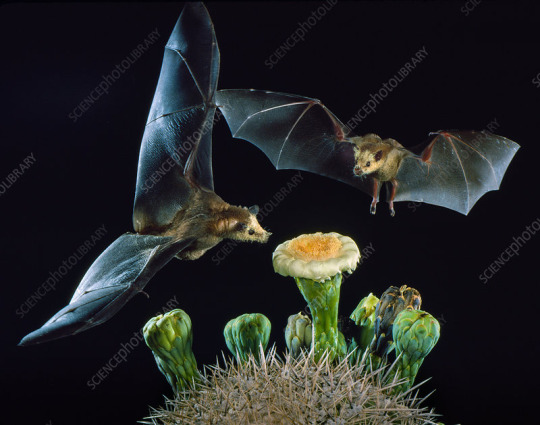
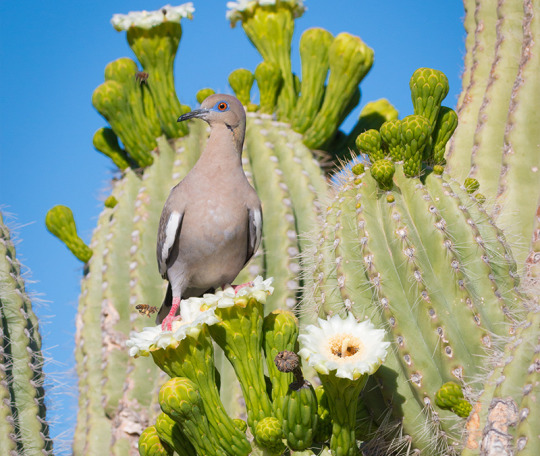
#crow.txt#ocposting#fairies#tulip#worldbuilding#strangers are reblogging this so hi this post is about my fairies who specifically live in sonora mexico#tulip is my 7 year old 5 inch tall oc
35 notes
·
View notes
Text
sometimes the view outside my kitchen window is so idyllic i almost feel unworthy of the peace and harmony the animals there show me. the doves and grackles and jays and cardinals and warblers and ibis and woodpeckers all eat together, alongside squirrels and (at dusk) raccoons and possums.
natural fungi grow happily and undisturbed nearby, breaking down fallen leaves and seed fragments and making the soil a happy place for underground friends like worms and burrowing reptiles and amphibians. the canopy of the large trees overhead provides shade in the rising heat and shelter from the rain and wind, even for the butterflies. the blooming flowers on the edges provide sustenance for pollinators and the large 35-year-old trees nearby provide a variety of homes for all who visit this little clearing of mine. there is nothing wasted here. everything is made use of in this little microcosm. everyone, down to the tiniest insect, has a role.
my neighborhood used to boast large patches of untouched old growth forests when i was very young. one of my earliest memories was crying to see them cut down for development. these animals have been displaced so violently, now considered “pests” viable for extermination in the new mowed backyards where their homes used to be. they have nowhere to go and limited places to forage for food.
it’s nothing like those beautiful long-gone forests, but i’m more than happy to keep providing something, however ersatz, for them until i have enough resources to purchase as much land as i can here to replant native flora on, where the forests used to be.
it will take my whole life to be able to secure something like that—but i am determined to give back to the place i grew up in, no matter what i have to do to achieve it, or how long it takes. i will make reparations for what we have taken from the creatures we share this land with. i will give them back at least one approximate forest. it won’t ever be the same, i can’t ever get that perfect ecosystem back. but i can give them something in the vast human-developed desert of nothing.
for now, this is the best i can do. but i still think it’s something.
#i also protect them every time i do a successful TNR of the neighborhood stray cats#it’s all connected. everything i do has a purpose
10 notes
·
View notes
Text
at work: saw a lil bug on the outside of the front windows. went out to relocate it to a friendlier bush, was delighted to realize the bush was alive with bees and other pollinators, all buzzing around delicate little pink flowers
as i turned to go back inside i heard a clicking sort of tapping noise, and was even MORE delighted to discover a woodpecker up on the furthest, tallest corner of the building, pecking away at a giant number 1
i work in a small locksmith shop tucked away in an industrial park, and it makes my heart happy to see even here, life does its thing. even amid the concrete and steel of humanity, life peeks through, waiting to flourish
14 notes
·
View notes
Text
goofy hawaiian bird facts i learned from this book i read on a plane
* woodpeckers hate flying over water, so no woodpecker species has ever made it to hawaii. HOWEVER, nature abhors a vacuum, and that whole “gettin lil grubs n such outta tree bark” niche was ripe for the taking... so the woodpecker niche was filled by this guy:
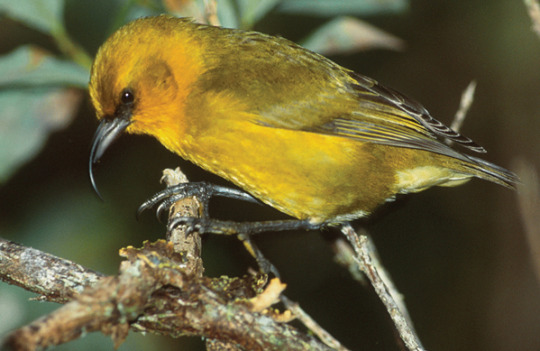
“what,” you may ask, “the heck.”
the ʻakiapōlāʻau is a member of the Hawaiian honeycreeper family, which is mostly evolved to drink nectar from flowers. but this dude figured out he could just... open his beak real wide... peck with only with the stumpy lower “jaw” of his beak... and get some extra food that way. thus he is a “wood” “pecker” lmao.
here’s a video of one pecking. cw goofy bird bein GOOFY AS HECK
* speaking of said honeycreeper family: the reason for their goofy curved beaks is not just specialized-adaptations-to-take-advantage-of-different-food-sources (as is classically the case in eg Darwin’s finches), but coevolution alongside Hawaii’s flowering plants! see, Hawaii doesn’t have any native bees or mosquitos, so the flowers desperately needed some sort of pollinators; ergo, they relied on birds bopping their heads in for some nectar and getting some pollen on their foreheads in the process.
it is most advantageous for the flowers if the bird has to work at it / struggle a bit to get the nectar (so that it shakes the flower and gets more pollen on itself in the process), but it is most advantageous for the bird if they have to do zero work. so you get native flowers evolving all kinds of weird, convoluted shapes to make it harder to sip their nectar, and birds evolving ever-curvier ever-goofier beaks to compensate. it’s kinda luck the duck-corkscrew-penis-thing but less uhhh visceral/brutal, lol
* i knew, vaguely, that most of Hawaii’s native avifauna are endangered due to habitat loss and predation from invasive species. what i didn’t realize is what a menace avian malaria is—probably a bigger factor in the population die-off than anything else. there’s huge parts of the islands where aggressive fencing has gotten predation/disruption by invasive species under control, but the birds are still facing massive population die-offs b/c they literally had none of these diseases until humans showed up. (which is more recent than i thought! the polynesians rolling in was only ~1000 years ago, and promptly extinct’d a bunch of the more dodo-like birds the island had at the time, haha.) there’s evidence that some of the honeycreeper species are finally developing resistance, which is great news (the ʻapapane, in particular, seems to have developed a lot of resistance in small population studies, and also its population is increasing & its range is expanding), but the ‘i’iwi still seem to be 100% vulnerable to the illness in small population studies, so. that + climate change (which will make the island warmer, thus extending the range of mosquitos further up into the mountains, which will spread the range of avian malaria even further) makes the prospects for 'i’iwis really grim, alas :(
* i thought most of the invasive bird species on Hawaii were brought over accidentally, like, escaped pets or whatever, but turns out they were mostly deliberately introduced by this one Hawaiian bird club (Hui Manu) during the 1930s onward lol. in particular, there were very few native birds left in the lowlands by then, people think birds are cool, they’re like there are no birds here so what if we bring our own... and now there’s, like, northern cardinals and house finches n shit right here in the middle of the pacific. rip
* Hawaii’s state bird, the Hawaiian goose (aka the nene), is actually a funny story amusing/uplifting conservation story. by the 1980s, they were basically extinct in the wild, and it’s super-embarrassing if your state bird goes extinct, so they were trying to reintroduce some captive flocks into the wild, right? they did some early reintroduction programs on Oahu and Maui, but they went poorly, in part because those islands have a serious mongoose problem (thanks to sugarcane farmers bringing them in to “help” “control” the rat population in the 1800s).
there was Kauai sitting right there, however, which had a mongoose population of 0. perfect! however, they hesitated to reintroduce the goose there, because they weren’t sure if the goose was actually native to that island, and by that time they’d finally become a lil gun-shy about reintroducing species willy-nilly based on vibes
however, the choice was taken out of their hands when a massive hurricane blew through in 1982, which blasted apart the enclosures for a captive flock on Kauai, which sent them scattering all over the island.
this flock positively thrived on Kauai, and happily, later fossil evidence confirmed that nene had in fact historically existed on the island, so it was indeed a reintroduction, and they’ve now been reestablished on Oahu and Maui as well. gogo nenes~
* apparently bristle-thighed curlews do the eclipse plumage thing that ducks do (where they molt all their feathers at once and are thus flightless for a period of time), and that’s part of why they’re hella endangered right now. they relied on those lil tiny pacific islands having zero predators, alas
* “the graceful and handsome Hawaiian Stilt, a relative of the Black-necked Stilt of North America, whose annoying hipping calls caused one spart-aleck to call it the ‘pond poodle’” lmao
* i knew about white terns, the goofy little cuties famed in bird memes because they just lay their eggs on tree branches with zero nest material or any other protection for the things. but did you know they specifically like to nest in... urban Honolulu? apparently the easiest way to find them is just go to their version of Central Park and look up to find the lil youngster yapping away from a big ol branch. awesome
anyway! hope you enjoyed this edition of Bird Facts TM
48 notes
·
View notes
Text
Mr. Saguaro & the Cactus Analysis
As you all know, Pokemon characters are often named after plants and trees! Mr Saguaro is no exception, and what I discovered is actually quite charming and befitting of his character! \(//∇//)\

Saguaro is a type of cactus native to the Sonoran Desert that spans through parts of Arizona, California, and Mexico. When you think of a cactus, you’re most likely thinking of the saguaro, as it’s become an icon of Southwestern media.

The saguaro is huge, as it can grow to be over 40 feet tall, weigh 1 ton, and live over 150 years. It is also covered in menacing spines on its many arms. However, the saguaro is also a keystone species in the Sonoran Desert, providing food and shelter for animals and humans! ‘Keystone Species’ refers to special fauna or flora that literally keep the ecosystem around it alive. Take it away, and the entire ecosystem crumbles or is irreversibly damaged. The saguaro is valued through every stage of its life, from its nourishing seeds, the shelter inside the cactus, and its wood-like ribs once it dies.

Mr. Saguaro is clearly valued among the students, and his Home Ec classroom is safe haven where kids can chat and eat. He looks out for others and is an expert in domestic skills. Saguaro tries to present himself at the dark and brooding man other people think he is (like the spines of the cactus), but in reality, he’s very gentle, caring, and likes cute things. He is also very protective of Pokémon, and adamant that people be mindful of a Pokémon’s individual needs. Saguaro is definitely a symbol of strength and protection at the Academy!
Here are some other things I found interesting:
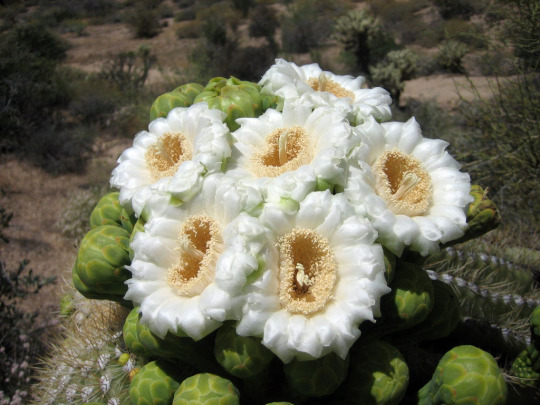

The saguaro has beautiful white and yellow flowers! It’s reminds me of the flower stitched on Saguaro’s apron (that could just be a basic daisy, but y’know)
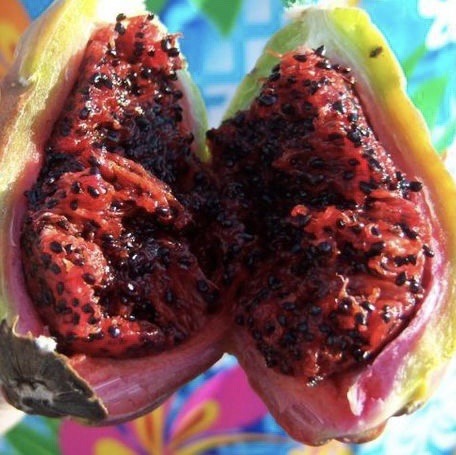

The cactus also grows a pulpy red fruit with a pink interior. It makes me wonder if Saguaro’s color palette was inspired by the fruit? This fruit is reportedly very sweet and tastes a bit like strawberries. Saguaro has a sweet tooth!
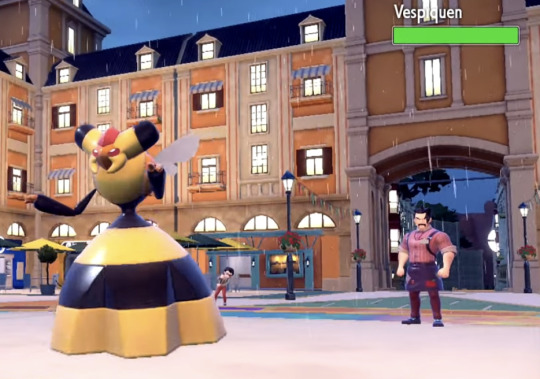
The saguaro needs other animals and bugs for pollination, such as the White-tailed Dove, Long-Nosed Bat, and the Honeybee. The Honeybee is the most influential pollinator for the saguaro. Isn’t it interesting that Saguaro has a Vespiquen in his team?
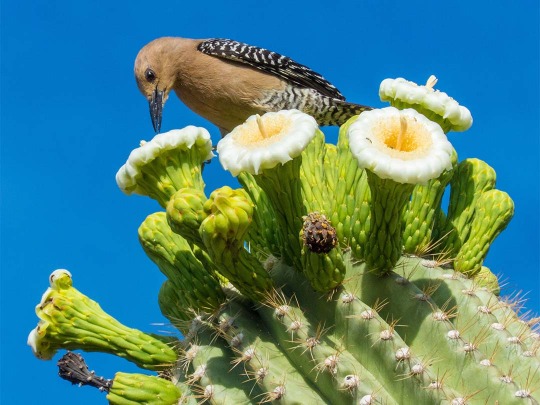
This point is a bit selfish lmaoo, but many birds rely on the saguaro for food or shelter, such as the Elf Owl, White-tailed Dove, Finches, Crested Caracara, Red Tailed Hawk, etc. There have even been a few cases of Bald Eagles nesting in the cactus! The Gila Woodpecker is one of these birds, because its beak is strong enough to peck through the cactus. The Gila Woodpecker and the saguaro have a mutually beneficial relationship because of the food and shelter provided to the woodpecker, and the pollination and ridding of harmful insects for the saguaro. Anyway PlainDoughnutShipping is real because Ecology said so 。゚(゚´ω`゚)゚。

This is a huge stretch, but recall how the saguaro is a Keystone Species. This name comes from the Keystone in an arch or vault. The keystone is the center stone placed last to secure the entire structure. Like the Keystone Species, if you get rid of the keystone brick, the entire arch will collapse. Arches are very popular in Spanish architecture. It’s been a staple since the Romanesque period, influencing Mudéjar, Gothic, and Renaissance architecture in Spain. The point is, arches are seen as very traditional, old fashioned, yet elegant. They are a symbol of stability and strength. I think it ties in with Saguaro’s gentlemanly behavior, but it probably isn’t this deep haha. I just can’t help myself ^_^; @shinyhappydigistar made this really interesting post on Saguaro’s old-fashioned speech mannerisms in both English and Japanese, so please read this for concrete evidence lol
I thought these little details were very charming! \(//∇//)\ I went overboard with some parts, but I think the designers put a lot of effort in their character designs. Mr Saguaro is cute and deserves to be analyzed!
#pokemon#pokemon saguaro#mr saguaro#instructor saguaro#pokemon sv#analysis#i am cringe but i am free#I’m coping so hard for this ship lmaoo#how did I go from cactus to Spain architecture?? XD#this is my analysis post and I can overthink as much as I want lol#long post#KallistoPost
31 notes
·
View notes
Note
Honeycreepers? 👀
YAYYYYY YAY THANK YOU FOR ENABLING ME
alright so honeycreepers are these really cool birds native to the islands of Hawai‘i and they are INTERESTING. so many reasons why but one of them is that they have some extreme adaptations to their environment. famously extreme.
this is an Asian rosefinch

specifically a Chinese white browed rosefinch but that's not important. this is a rosefinch.
now a long LONG time ago, a rosefinch from Asia made an huge flight from Asia to the islands of Hawai‘i. this rosefinch species became the ancestor of a HUGE variety of birds.
evolution like this is pretty common. islands are a hotspot for evolution because of the isolated and unique environments. I could talk so much about that. anyways what's incredible about this is that the descendants look like this

ADAPTIVE RADIATION!
Rosefinches were one of 14 species of birds who originally settled on the islands, and make up the islands native bird species. the islands were pretty new and had very little diversity so there was a LOT of work to do
with so many niches to fill, these birds got to work. they took up roles in the ecosystem that were taken by other animals on the mainland. over time they started to evolve, emphasizing certain traits that allowed them to fill these new roles better.
take for example the ‘I‘iwi. the ‘I‘iwi is this angel
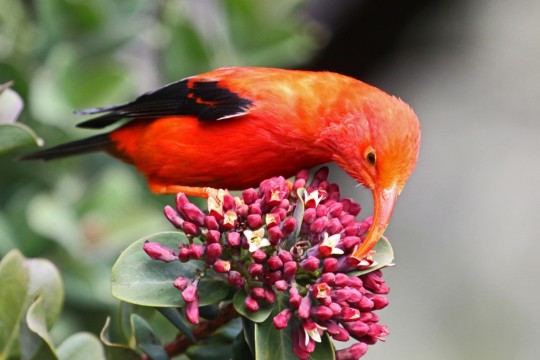
when the rosefinch arrived, there were no bees, so one of the roles they needed to fill was that of pollination. this bird evolved a long curved beak via coevolution (alongside the flowers of the islands) this allows them to reach deep inside the flowers to get nectar, and the flower will have it's sexual organs positioned to leave pollen on their foreheads. then they go to the next flower and deposit it and boom! pollination! the shape also makes it less straining to reach in.
another example: ‘Akiapōlā‘au, ‘Aki for short.

LOOK AT THAT BEAST. anywyas this one fulfills a fantastic and essential role: a woodpeckers.
which like. ??? with that beak???? but yeah. as you can see the bottom mandible is very straight and solid, not unlike a woodpecker. how they do it is they open up wide, angle their upper mandible out of the way and hit the bottom one against the wood of the tree! they look like they're screaming : )
they're very effective too! like the sapsuckers, which are woodpeckers, they'll peck holes into trees and use them as sap well, which are also used by other birds as well
the other honeycreepers are similar, adapting to fill the roles of warblers (insectivores) or to eat fruit and nuts. its fascinating and a beautiful example of evolution and adaptation and it is so damn cool
most of the information here was taken from this book by Douglas Pratt and the information and knowledge I knew from before. mostly from the book though.
DISCLAIMER. I am not a biologist I am an enthusiast. if I got something wrong tell me. anywyas thanks for letting me ramble I LOVE BIRDS
#i hope that link works#ANYWAYS THANK YOUUUH#i love these beast i love them#ask#eggthew#talk tag#💞💞💞#birds#THANK YOUUUU
11 notes
·
View notes
Text
Day 6 - Sharbot Lake to Perth - 42 km
Trail: Mostly flat
Last night I stayed at the Charbot Lake Inn. It's on the lake with beautiful views, a dock, kayaks, and a BBQ. I cooked my own steak for dinner. The bed was comfortable and the room was clean. There is a pub next door, but it was closed. I tried to stay at the Rock Hill B&B, but it was full. Both are recommended.

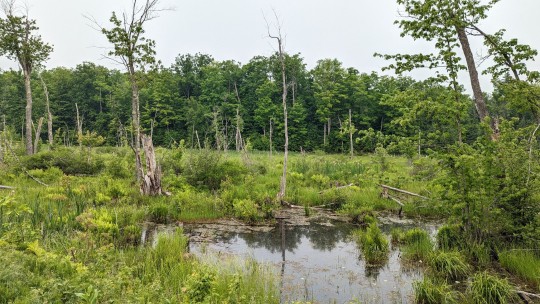
I stopped to take a picture of this turtle and immediately noticed that the air was filled with sounds. The marsh was alive with the sounds of bullfrogs croaking, birds chirping, the pecking of woodpeckers, the flutter of ducks. I saw flowers, bees pollinating flowers, birds flying in all directions, and trees that have died and fallen, creating a very creative landscape. I have been riding through marshes every day of my ride and only today did I notice this beauty. I need to slow down and smell the roses. Apparently something I forgot when I lost my sense of smell.


I noticed a lot of markings along the trail. I finally concluded that it must be turtle nesting time and that the trailside mounds were nests. That would explain the turtles along the trail. Also interesting was the fact that turtles climb up a steep hill about 10 m to the location of the nest.

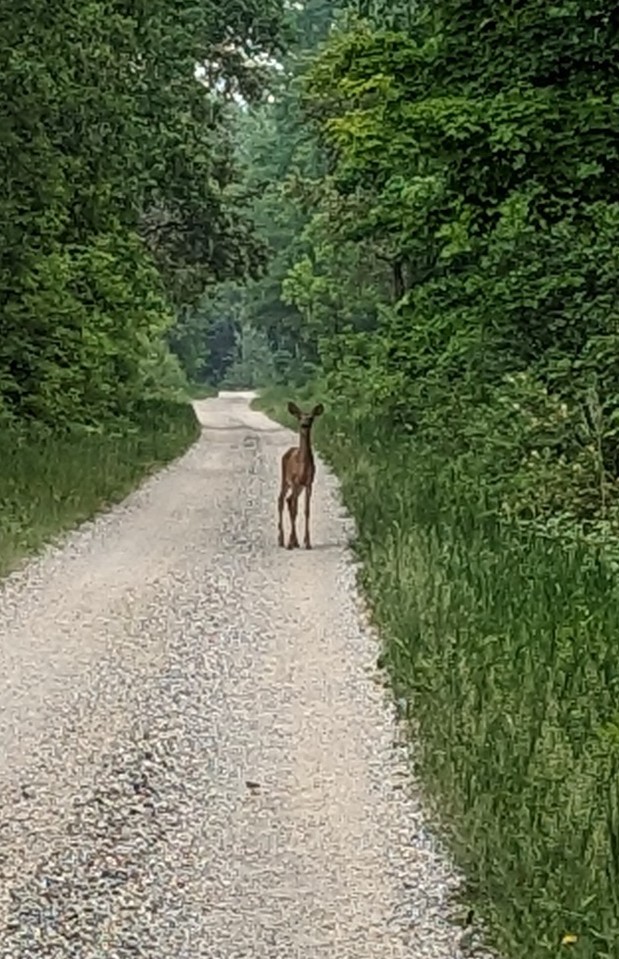

The trip was only 42 km but there were no restaurants between Charbot Lake & Perth so I packed a second breakfast and snacks.
The trail was good today and once I reached the start of the Tay-Havelock Trail (about 15 km from Charbot Lake) the trail became much better. The trail wandered past lake after lake with the odd marsh and wooded area. Definitely lots of opportunity to cool off on a hot day. Interesting sites included a deer on the trail, a giant beaver dam and a number of 100+ year old wooden barns.
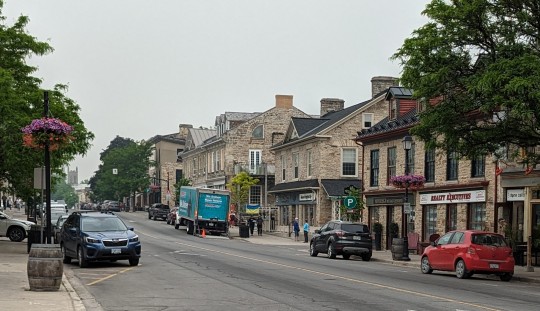

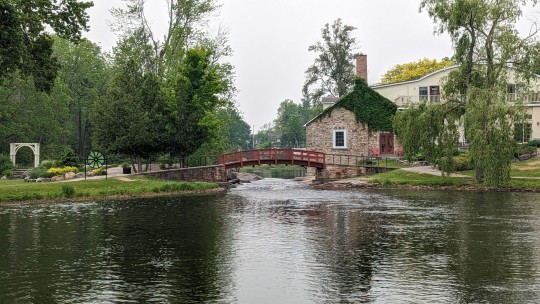
Perth is a quaint little town with beautiful old stone buildings, parks, a coffee roastery, a couple craft breweries and some cool restaurants. There's even an opportunity to splurge at the Parkside Spa + Salon.
Tomorrow is Day 7 of my journey and it will be my day of rest.
3 notes
·
View notes
Note
Favorite 🦜 go
bro I literally started answering this and saved a draft but I guess it got swallowed whole when I switched between mobile to desktop?? idk. anyway birdies. I'm also gonna do top three because!! birds!!! are so fun!!!!
firstly I highly respect the corvid love. I want to train a flock of crows to bring me gifts soooo badly. maybe when I am a homeowner. someday.
Red-tailed hawks! They're like the most common raptor in the US but I love them anyway. There's a leucistic one that lives in my neighborhood and I got some very subpar photos of it once lmao.

this may seem like poor quality tumblr image, but that's for real how grainy the photo is. I was using my biggest camera lens zoomed in all the way and I still couldn't focus it entirely properly :,)
2. downy woodpeckers! I love woodpeckers in general but downies are so small and very common birdfeeder birds so I get to see them more often! also they're not quite as loud as the bigger woodpeckers lmao. there's a (possibly pileated?) very large woodpecker we've seen and heard outside our house from time to time and boy. is he LOUD. i respect it tho.
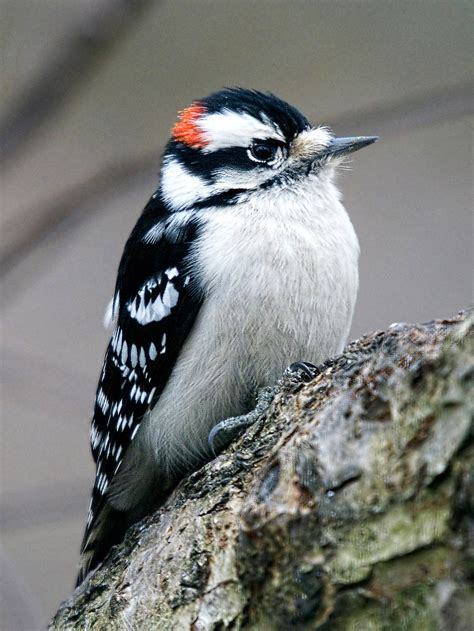
here's a downy! damn this image is huge wow. anyway the female ones don't have the red spot! I appreciate their monochrome chic but I do like the red hat on the males quite a bit.
3. best for last!!!!!!! hummingbirds!!!!! my babies. my all time favorites. pollinators in general are like the theme of my life. butterflies, bees, moths. I love them all. but hummingbirds? most gorgeous perfect creatures ever. we only really get the ruby-throated hummingbird here where I live (and they don't stick around for the winter) but we get a couple accidental species every once in a while. I love them all. most perfect bird ever.

hummingbird!! baby!!!!! so everything!!!!!!! once I was sitting at the window seat of a cafe and one of these babies hit the window and fell to the ground. it was alive but just kind of sat on the ground looking traumatized for like twenty minutes and I started crying because I was so worried about it. when I say "once" I really mean "this summer".
thank u so much for the ask, star!!! i know i asked first but i was delighted to get a reciprocal ask lol :D birds are so cool
#asks#ode by ode#yay birds!!!#i made this post instead of cleaning my stuff and getting ready to move back to my dorm in a few days#also sorry for the delay i was doing errands and then i had to help my sister#she was finishing her xmas gift for her 'not boyfriend'#and was on a bit of a time crunch#insert skull emoji bc i'm too lazy to to the edit-emojis-click on the right emoji thing
6 notes
·
View notes